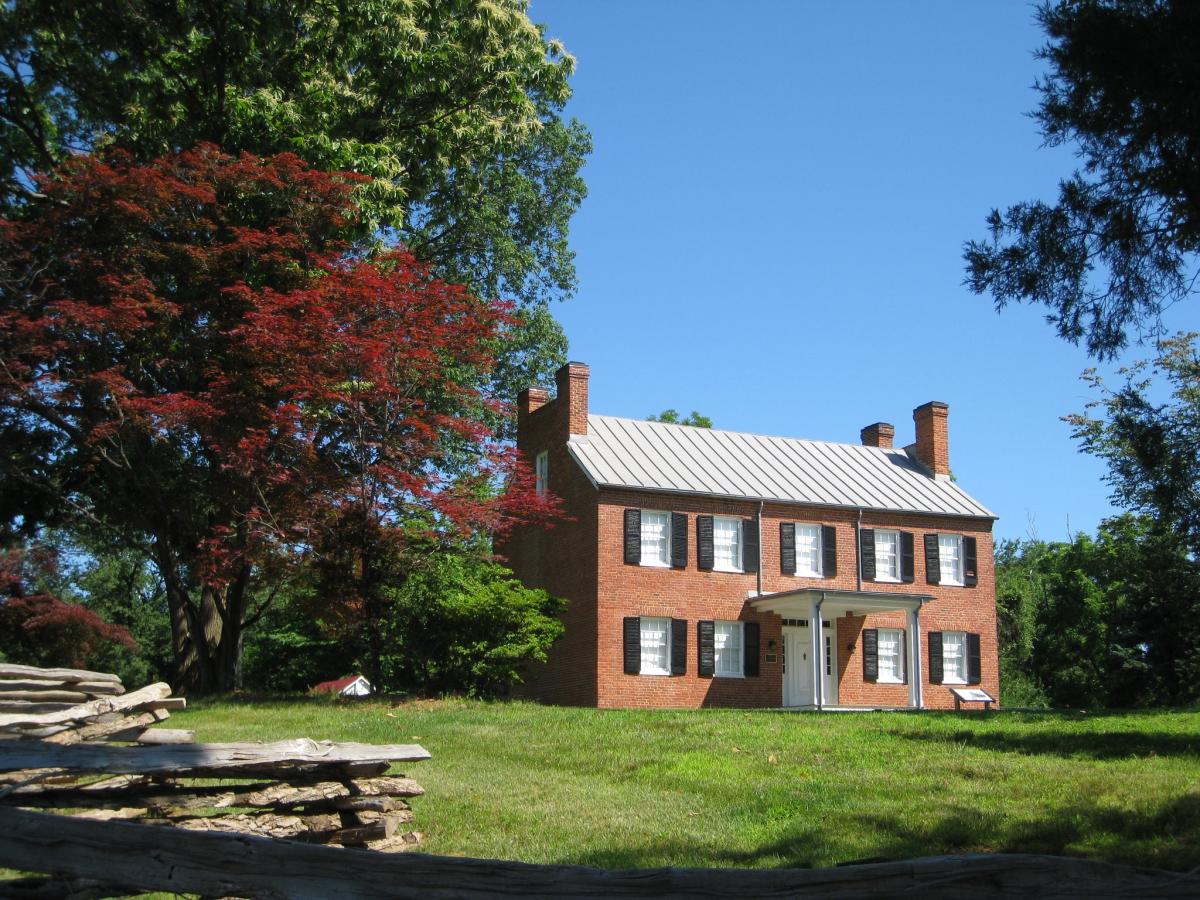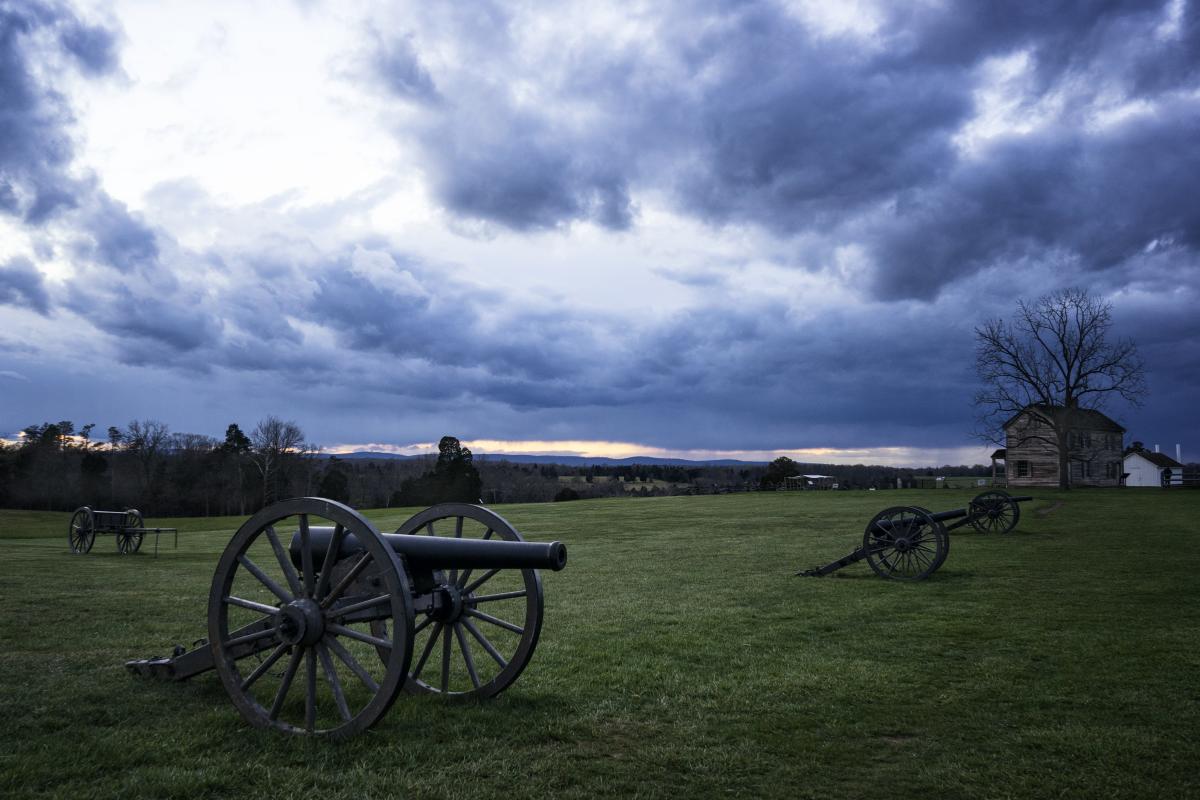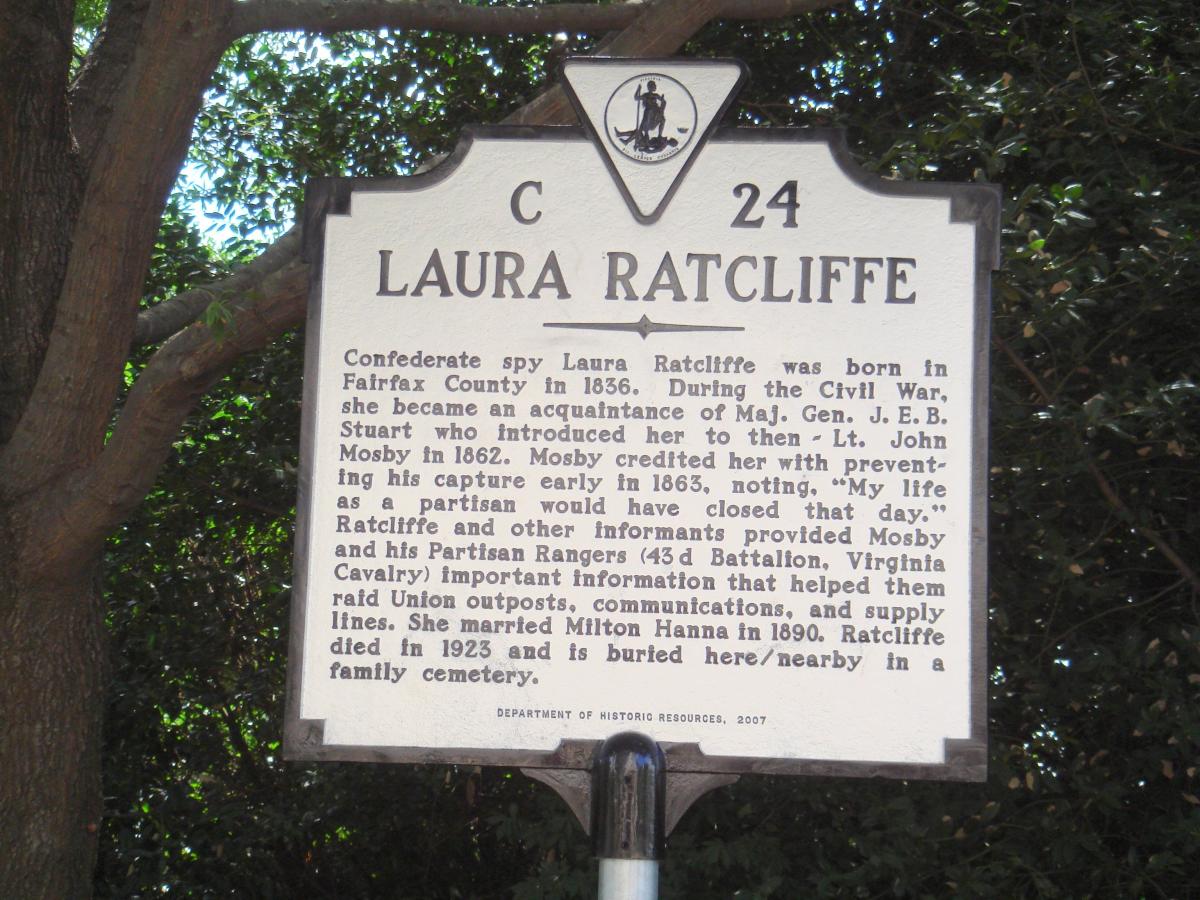As we approach our nation’s 250th birthday, it’s important to recognize the Revolutionary, Civil War, and military history that has defined Fairfax County and our nation over the years. The three itineraries below feature historic markers and sites from the Civil War. Complete them all in a long weekend or take them one at a time to discover the rich stories of love, struggles for freedom, and tales of conflict that mark this tumultuous period in history.
Day 1 - Alexandria to Falls Church: Forts, freedmen and balloons

Civil War aerial reconnaissance. You may as well talk about TV shows during the Revolutionary War, right? But one of the fun and fascinating stories from the Civil War is that Thaddeus Lowe became the father of aerial reconnaissance, lifting his hot air balloon over the Virginia countryside, looking for Confederate troublemakers moving into Union territory. Pohick Church soon became his base of operations.
Today’s itinerary begins on Route 1 near the county line at this fascinating church that’s scarred by bullet holes and defaced by graffiti from the Civil War. The church itself predates the United States, has an ancient baptismal font and was the spiritual home to George Washington and George Mason.
As you move north along Route 1, note Woodlawn Historic Site as you make your way to Gum Springs. (George Washington’s Mount Vernon is also nearby.) Gum Springs was established in 1833 as a free black community and remained so during the war. The residents of Gum Springs found employment and independence working at Woodlawn for Quakers who were conscientious objectors to the war.
Further north in this area, find Fort Willard. Located atop a hill with sweeping views to the river, Fort Willard was the southernmost Union fortification protecting the Federal Capital, roughly 10 miles away. From here, head west to Fort Ward Museum and Historic Site. This is considered the best preserved of the Union fortifications and includes replicas, exhibits, and interpretive programs.
At this point, you may be getting hungry. Try the Beeliner Diner near Fort Ward or hold out for some highly recommended Vietnamese food at Eden Center near the Falls Church sites.

Moving into Falls Church, there are multiple sites to visit. GPS is recommended here, as the area is marked by the confluence of multiple major roads. Perhaps the most celebrated Falls Church site commemorates Lincoln’s Review of the Troops. It was the largest military review ever in the US, featuring 65,000 troops. Other markers in Falls Church include The Falls Church, used as a Union hospital. Galloway Methodist Church was established as an African American church and cemetery. John Singleton Mosby conducted a raid in Falls Church that killed one Black man and injured another in Union territory. And at Taylor’s Tavern, we encounter Thaddeus Lowe and his hot air balloon again.
From Falls Church, continue to Arlington National Cemetery. Once the beloved home of Robert E. Lee, it was sanctioned by the Union during the war and turned into the iconic cemetery you know and the final resting place of more than 16,000 Civil War veterans. Finally, head to Fort Marcy, a relatively undisturbed fort 275 feet above the Potomac River, only accessible from the northbound lanes of the GW Parkway.
Day 2 – Fairfax to Vienna: Clara, graffiti, and the Gray Ghost
 Fairfax Court House
Fairfax Court House
She worked as a clerk in the US Patent Office. She held a man’s job and earned equal pay in an office filled with male coworkers. And when war broke out, she wanted to help her country. She made it out to Fairfax Station on the Orange and Alexandria Railroad where she nursed the wounded. She tended troops during both First and Second Manassas (as well as on the deadliest day of the war at Antietam, where a bullet cut through her dress sleeve and killed the man she was tending.) These experiences changed Clara Barton’s life. She went on to be known as the “Angel of the Battlefield,” begging anyone who would listen for medical supplies and dodging fire to nurse the wounded. She later founded the American Red Cross. And it all began at Fairfax Station.
Whether leading the Skirmish at St. Mary’s or conducting his notorious Midnight Raid, John Singleton Mosby is the war’s most colorful vigilante. His uniform color, combined with his ability to conduct lightning-quick raids and evade capture, earned him the nickname the “Gray Ghost.” He was very active in the Fairfax area during the war, and these stops give you an idea of who he was.
Nearby is the Historic Fairfax Courthouse. While mostly in Confederate territory, Fairfax County was highly contentious during the war. An early Fairfax Courthouse skirmish claimed the life of Capt. John Marr, the first Confederate officer killed by the Union in the war. A year later, the Union took control of the Courthouse and occupied it for the rest of the war. There’s an interesting wartime story about saving George Washington’s will from the chaos at the Courthouse and the removal and subsequent sale of Martha Washington’s will.

Image courtesy Historic Blenheim/Civil War Interpretive Center via Facebook
The next stop may be one of the most compelling of your tour. The Willcoxon Farm in Fairfax was a popular site for Union troops to camp and occupy. Residents were forced to abandon the home, Historic Blenheim, and it was used as both a hospital and shelter. What makes this home unique is the graffiti the soldiers left behind! More than 120 scrawls have been discovered beneath the wallpaper—a “diary on the walls” giving insight into the minds of the young men whose fates were at risk. You can see a 3D replica of the graffiti in their interpretive center, then tour the house and grounds.
Now it’s time to head to Vienna. On the way, be sure to stop by the Flint Hill Cemetery in Oakton where many prominent figures are buried. In Vienna, visit the Star Fort marker, an earthwork fortification protecting the Capital. And end your trip at the Freeman Store and Museum, a general store that was used as a makeshift hospital during the war. Here, you can visit the store, shop for gifts, and tour the museum.
All around the Freeman Store, you’ll find plenty of places to dine. We recommend the Vienna Inn, The Pure Pasty, Sunflower Vegetarian Restaurant and Royal Nepal Bistro. If you still have sunlight and energy to expend at the end of your Civil War tour, continue on to Meadowlark Botanical Gardens for lovely vistas and the Western Hemisphere’s only public Korean Bell Garden. Also nearby is the trendy Mosaic District and the shopping of Tysons, as well as The Perch, an urban park located 11 stories in the sky.
Day 3 – Centreville & Chantilly to Herndon: Battles, skirmishes and spies
 Manassas National Battlefield Park; credit: Angela Pan for Visit Fairfax
Manassas National Battlefield Park; credit: Angela Pan for Visit Fairfax
There is one Civil War site in the region that needs no historical marker. Instead, it became its own National Park. Manassas National Battlefield Park was the site of two major Civil War battles—First and Second Manassas/Bull Run. In the summer of 1861, First Manassas was the first full-scale battle of the war, delivering a crushing defeat to the Union and setting the tone for the first few years of the war. Second Manassas happened a year later, aiding Lee’s push northward at a critical time. This battlefield is where you’ll find iconic sites like the Stone House, the Stonewall Jackson Memorial (he earned his nickname here) and the Stone Bridge. (Plus, visit the adjacent Winery at Bull Run for more Civil War history with great-tasting wines and a full-scale Civil War Museum.)
Next on the agenda is Blackburn’s Ford where a skirmish took place three days before First Manassas, bolstering the Confederates’ confidence at a key time. Also in Centreville, you’ll find the Mystery of the Centreville Six and the Old Stone Church, a makeshift hospital for Union soldiers fleeing First Manassas. By now it’s lunchtime. Here are suggestions.
From here, head to the Battle of Ox Hill. This is the only Civil War battle fought in Fairfax County. And it was a doozy. Just after Second Manassas, fighting broke out at Ox Hill. A violent storm rained down on soldiers as they clashed fiercely on the battlefield. In the end, two Union Generals lost their lives, a devastating blow for the North.
In the wake of the Battle of Ox Hill, Sully Farms was used as a hospital. Owned by Unionists in Confederate territory, the men fled the homestead early on in the war to avoid capture. The women stayed and ran the farm for most of the war. The walls of Sully Historic Site hold many stories from the war—and they may have also held slaves fleeing the South. The site is on the Underground Railroad. (FYI, nearby, you’ll find the Smithsonian’s National Air and Space Museum Steven F Udvar-Hazy Center, part of the largest collection of aviation artifacts in the nation and, likely, the world.)

Image courtesy J.J. Prats, hmdb.org
As you continue toward Herndon, you’ll find two markers for Laura Ratcliffe. She lived here at Merrybrook and is buried nearby. What makes her compelling is that she was a female spy for the Confederates, feeding information to JEB Stuart and John Mosby. Mosby credited her for saving him from capture. Her story is marked by courage, determination, and maybe a little romance. Also in Herndon, you’ll find more “Gray Ghost” shenanigans with rebel firebrand John Mosby at Mosby’s Raid and Herndon Station.
A handful of miles away, you’ll come across the story of the Battle of Dranesville. It was the Union’s first tactical success against the Confederates in Virginia in 1861. This site puts you near Great Falls, where you might want to take in the breathtaking waterfall at Great Falls Park. It’s easy to reach from the parking lot.
Whether you’re a Civil War buff or an overall history buff, Fairfax County delivers fascinating tales from the center of the action. Use these itineraries as your guide for an immersive and captivating tour of the War Between the States in Northern Virginia!





